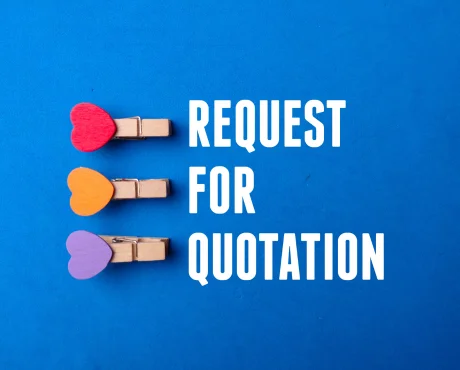Table of Contents
- What Does Cost Analysis Actually Mean in Procurement
- So, What’s Draining Your Procurement Budget?
- Some of the Best Tools for Procurement Cost Analysis
- Best Techniques For Procurement Cost Optimization in Manufacturing
- So, How Do You Actually Run a Procurement Cost Analysis?
- When Procurement Crosses Borders, Things Change
- Track Procurement KPIs That Matter
- Final Thoughts
Most manufacturers don’t actually know what their procurement operations are costing them. Oh, sure, they can tell you what the last shipment of steel cost. They’ll quote you a number from their ERP dashboard. But ask them about the total cost, the buried expenses, the missed supplier discounts, the freight premiums they didn’t even realize they were paying -and it gets quiet.
Painfully quiet.
That silence? That’s lost profit. When running a manufacturing operation, procurement is often your largest controllable expense. Yet too often, it’s managed with outdated tools, surface-level reporting, and numerous assumptions. That’s why you should know how to do procurement cost analysis.
What Does Cost Analysis Actually Mean in Procurement
It is about breaking down every cost component in your sourcing and purchasing process. It means analyzing what you’re buying, how much, from whom, at what frequency, and under what terms. But it doesn’t stop there. It means understanding why those costs are what they are.
If you’re in manufacturing, your procurement costs likely fall into three buckets: direct costs (like raw materials), indirect costs (think freight, storage, handling), and then there’s the big one everyone forgets -Total Cost of Ownership, or TCO. That includes the entire lifecycle of the item -usage, maintenance, downtime impact, even disposal costs.
Now ask yourself: when was the last time your team calculated that?
So, What’s Draining Your Procurement Budget?

Procurement costs aren’t just numbers on a PO. They’re symptoms. And behind those symptoms are cost drivers -some obvious, some deeply hidden in the machinery of your operations.
Take raw material pricing. It seems simple, until you realize your purchasing team is buying in smaller quantities than your production schedule requires -so you’re missing bulk discounts. Or worse, your MOQ requirements are too aggressive, and you’re sitting on idle inventory that ties up cash.
Then there’s freight. Are you overpaying for LTL shipments because your orders aren’t consolidated? Is your supplier charging you above-market logistics fees and burying them in the invoice?
Don’t even get me started on currency volatility if you’re sourcing internationally. One bad exchange rate can wipe out your entire margin on a batch of components.
These are the kind of invisible landmines that procurement cost analysis is designed to uncover. But to do that, you need more than just intuition. You need the right cost analysis tools.
Some of the Best Tools for Procurement Cost Analysis
You don’t need more tools. You need the right tools – software that does more than just track procurement spending; it needs to dissect it. You want to see patterns, outliers, and cost anomalies without spending days in Excel. The tools given below are perfect for that.
 1. Cost It Right
1. Cost It Right
Purpose-built for manufacturers, this cost modeling tool lets you simulate should-cost estimates, break down part-level costs, and benchmark supplier pricing with precision.
2. SAP Ariba
A cloud-based procurement platform that offers end-to-end spend visibility, sourcing, and supplier collaboration. Ideal for manufacturers seeking tight ERP integration and real-time procurement control.
3 .Coupa
Known for its intuitive interface and spend optimization features, Coupa helps monitor budgets, track procurement savings, and prevent overspending through real-time alerts and AI forecasting.
4. Oracle Procurement Cloud
Offers automated sourcing, contract management, and supplier portals. Perfect for manufacturers needing full integration with financial systems and rigorous compliance controls.
5. Zycus
AI-powered platform focused on spend analytics and procurement intelligence. It helps identify savings opportunities, streamline sourcing, and track supplier performance effectively.
6. Jaggaer
Built for complex supply chains, Jaggaer offers strategic sourcing tools, cost modeling, and predictive analytics to drive smarter supplier decisions and reduce procurement risk.
7 . Excel (Advanced Use)
A flexible, budget-friendly option for custom cost tracking and spend analysis. Still effective when used with pivot tables, templates, and automation for lean teams.
Also Read: How AI Procurement Software is Changing Supplier Cost Analysis
Best Techniques For Procurement Cost Optimization in Manufacturing
Having procurement cost analysis tools is one thing. Using them effectively? That’s where most manufacturers struggle. The truth is, software won’t save you if your team doesn’t know what to look for. So let’s talk about techniques.
![]()
Should-cost Modeling
This is the ultimate litmus test. It forces you to define what something should cost, based on materials, labor, logistics, and overhead, and compare it to what you’re paying. If there’s a huge gap, it means your supplier is either padding their margins or your inputs are outdated. Either way, you now have leverage.
Activity-based Costing (ABC)
This one’s less glamorous, but brutally effective. It allocates indirect costs, such as procurement labor, vendor vetting, or inspection, to specific products or categories. Suddenly, you see that sourcing Component A from China costs you 9% more than Component B from Mexico, even though the invoice prices are the same. Why? Component A requires double the inspection and rerouting. ABC exposes these traps.
Cost-Volume-Profit (CVP) Analysis
It helps you figure out how procurement costs scale with your production volume. If you’re ordering parts at low volume, paying a premium, and then producing at higher capacity later, you’re burning cash unnecessarily. CVP shows you where economies of scale kick in -and how to restructure orders to hit that sweet spot.
TCO -Total Cost of Ownership
Too many procurement teams chase unit price. It’s easy to track. It looks good on paper. But it lies. TCO forces you to look at the full lifecycle cost of a part or material: acquisition, storage, maintenance, repair risk, performance impact, and end-of-life handling. In manufacturing, where downtime is a four-letter word, TCO tells the real story.
So, How Do You Actually Run a Procurement Cost Analysis?
Let’s get concrete. Say you’re the procurement lead at a mid-size electronics manufacturer. You’ve got 50 active suppliers, 300 SKUs, and a rising materials cost trend that’s freaking out your CFO.
Here’s what your process looks like:
- Collect Data: Pull everything: purchase orders, invoices, freight bills, supplier contracts, and payment records. You clean it. You organize it. You tag it by category, cost center, and supplier.
- Segment It: You break it into direct and indirect procurement. You isolate high-spend categories. You discover which 20% of SKUs account for 80% of your spend. That’s your battlefield.
- Run Analysis: Use cost analysis tools – whether it’s Cost It Right, Coupa, or a custom Excel model – to identify price variances, volume inefficiencies, freight premiums, and supplier inconsistencies.
From there, you translate analysis into decisions. You renegotiate with suppliers. You consolidate fragmented orders. You switch logistics partners. You create a supplier scorecard and kill off the bottom 10%. That’s how you do procurement cost analysis.
Also Read:Manufacturing Cost Analysis: What You’re Doing Wrong (and How to Fix It)
When Procurement Crosses Borders, Things Change

If you’re sourcing globally, and most manufacturers are, you’ve got extra layers of complexity. Currency exchange volatility can turn a “good deal” into a loss-maker overnight. Import duties, customs fees, and international freight? They’re cost wildcards unless you model them carefully.
Your cost and price analysis in procurement now has to account for:
- Multi-currency procurement and hedging strategies
- Region-specific supplier risks
- Compliance and regulatory fees that impact the total landed cost
Global procurement cost analysis isn’t just a scale-up of domestic processes. It’s a different game, with different variables -and higher stakes.
Track Procurement KPIs That Matter
If you’re not measuring performance, you’re managing in the dark. Procurement cost analysis isn’t a one-off project. It’s a system -and systems need metrics.
- Purchase Price Variance -the difference between expected and actual cost.
- Cost Savings % -not just price reductions, but total realized savings from process improvements.
- Spend Under Management to see how much of your procurement is being analyzed and optimized.
Cycle time, contract compliance, and TCO savings year-over-year? They’re all part of your dashboard. And if they’re not… they should be.
Final Thought
Procurement isn’t just paperwork. It’s not just operations. It’s a strategy. Your procurement team has the power to protect or destroy your margins. Procurement cost analysis isn’t about finding small savings. It’s about transforming your supply chain into a profit center.
And here’s the kicker: your competitors are figuring this out too. So, the question is: are you ahead of them, or about to get left behind?





